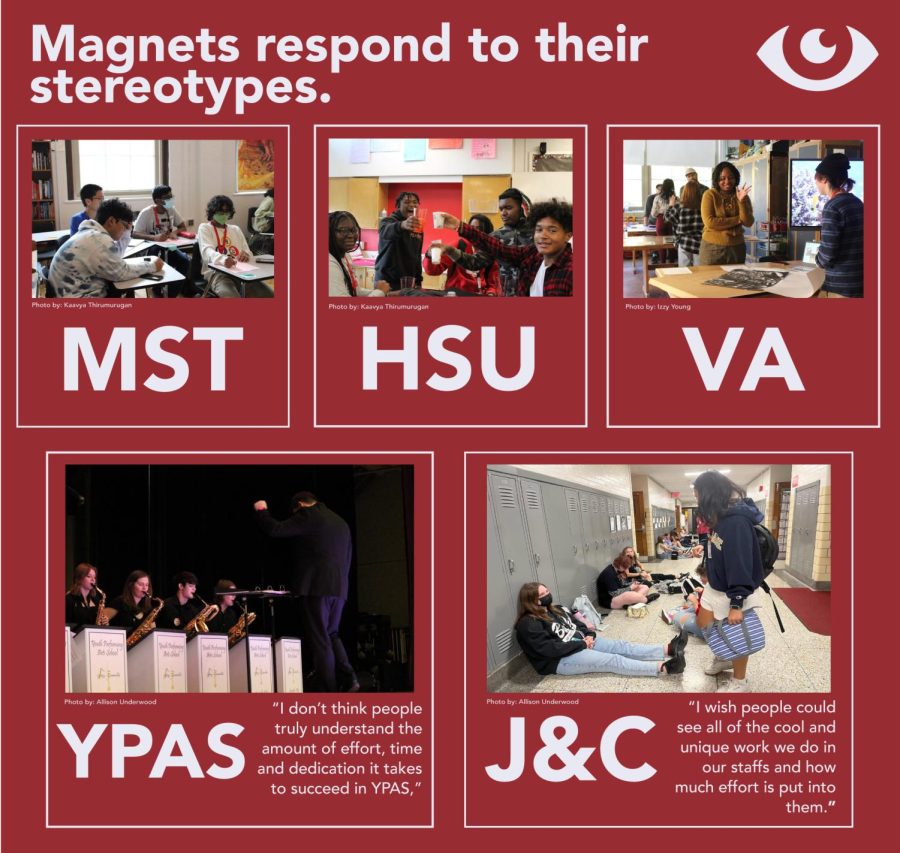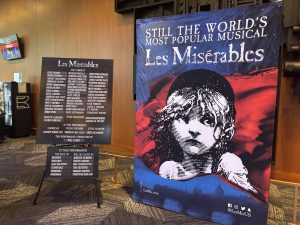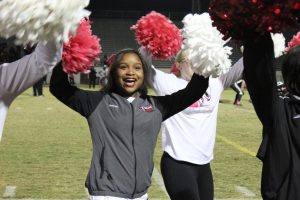Takeaways from RedEye’s magnet stereotypes series
We look back at our magnet stereotypes series and what we learned along the way. Design by Morgan Schmidt.
May 30, 2023
Throughout this school year, RedEye has explored the various stereotypes of each magnet and heard from students in those magnets about the ways stereotyping affects them. At Manual, a student’s magnet seems to become a part of their supposed identity. You hear that someone is in MST, VA or YPAS, and you feel as though you already know their main qualities and traits. As soon as you hear the acronym, the assumptions begin. Throughout this series, students have addressed their experience with stereotyping, their decision to apply to their magnet and the best and worst parts of their magnet. There are a couple of themes that have commonly emerged throughout each installment of this series.
One commonality found was that students in every magnet wanted outside students to know they were hardworking and intelligent. They wanted to point out the effort required to succeed in their magnet, with many students noting “it’s harder than it looks.”
“Sometimes I wish other students knew the workload isn’t actually that easy. I think they assume since it’s art it’s easy, but it’s really not,” Anna Cohen (11, VA) said.
“It’s not all fun and games. We worked hard to get in and put on shows and productions,” Ayla Starks (9, YPAS) said.
“There is a lot of work that goes into our magnet that nobody else realizes,” Riley Roberts (10, J&C) said.
“The MST curriculum is sometimes too much that all students collectively are struggling. Teachers often use MST as an excuse to overload us,” a sophomore in the magnet said.
A school like Manual prides itself on superior academics, abundant talent and a strong work ethic. All students want to be recognized for the time and effort they put into their work, whether it’s spent sculpting, rehearsing or conducting research. It is important for students to respect the intelligence and hard work of others, regardless of their magnet. Despite the rigor of Manual, students in nearly every magnet felt that they were often stereotyped as dumb, lazy or not hard working. It’s important to eliminate these stereotypes by remembering that everyone got into Manual for their skill and talent, and that they continue to work hard while here.
Another emerging theme was the desire for greater understanding and appreciation from the rest of the school. Students representing every magnet felt that their program was misunderstood at times. Additionally, students wished that the rest of the school would take the time to recognize their accomplishments.
“It’s hard work. Many people don’t recognize the amount of time and effort that we put into our art and most times it’s overlooked,” Asia Leach (11, VA) said.
“I wish people could see all of the cool and unique work we do in our staffs and how much effort is put into them. The creative and unique publications deserve a lot of praise,” Lia Royer (12, J&C) said.
“I wish people understood that we need support just as we support them. We all go to the football games, attend after school activities for clubs, and many students don’t attend the YPAS shows or offerings,” Clark Worden (12, YPAS) said.
Practicing curiosity towards other magnets is one way to combat stereotyping. For example, understanding why students chose to apply to their magnet can help one appreciate their decisions more.
“I chose HSU because I would have more freedom in choosing my classes, and I would still be able to participate in many of the other magnet classes and activities if I really wanted to. I didn’t want to limit myself in the electives I was able to take,” Ashley Billiter (10, HSU) said.
Many students believe classmates applied to HSU as an easy way into Manual. However, many applied due to the opportunities the magnet affords for self discovery and independence.
“I like hearing about unique people and want to write about them,” Sammie Haden (10, J&C) said, describing what originally interested them about J&C.
“I am very interested in the arts. I wanted to grow my craft. I love acting and I want to do it everyday,” Willow Fox-Young (9, YPAS) said.
Everyone likes to feel valued, and the students of Manual are no different. Students can appreciate other magnets by attending events and offerings and engaging in conversations with different people. From attending YPAS shows, to admiring the art in halls, from reading the latest edition of On The Record, or asking classmates about their science fair project, engaging with other magnets up close is a good way to combat unfair generalizations and help classmates feel more appreciated.
While stereotyping is a natural way to make order out of chaos, it can build walls between people. Hopefully, students can begin to appreciate each magnet a little more and judge a little less through this series. High school is a time for students to find their true passions and build their sense of identity, and the magnet system offers a place for students to do that. It is crucial to remember that although there are five separate magnets, we are one crimson family.








